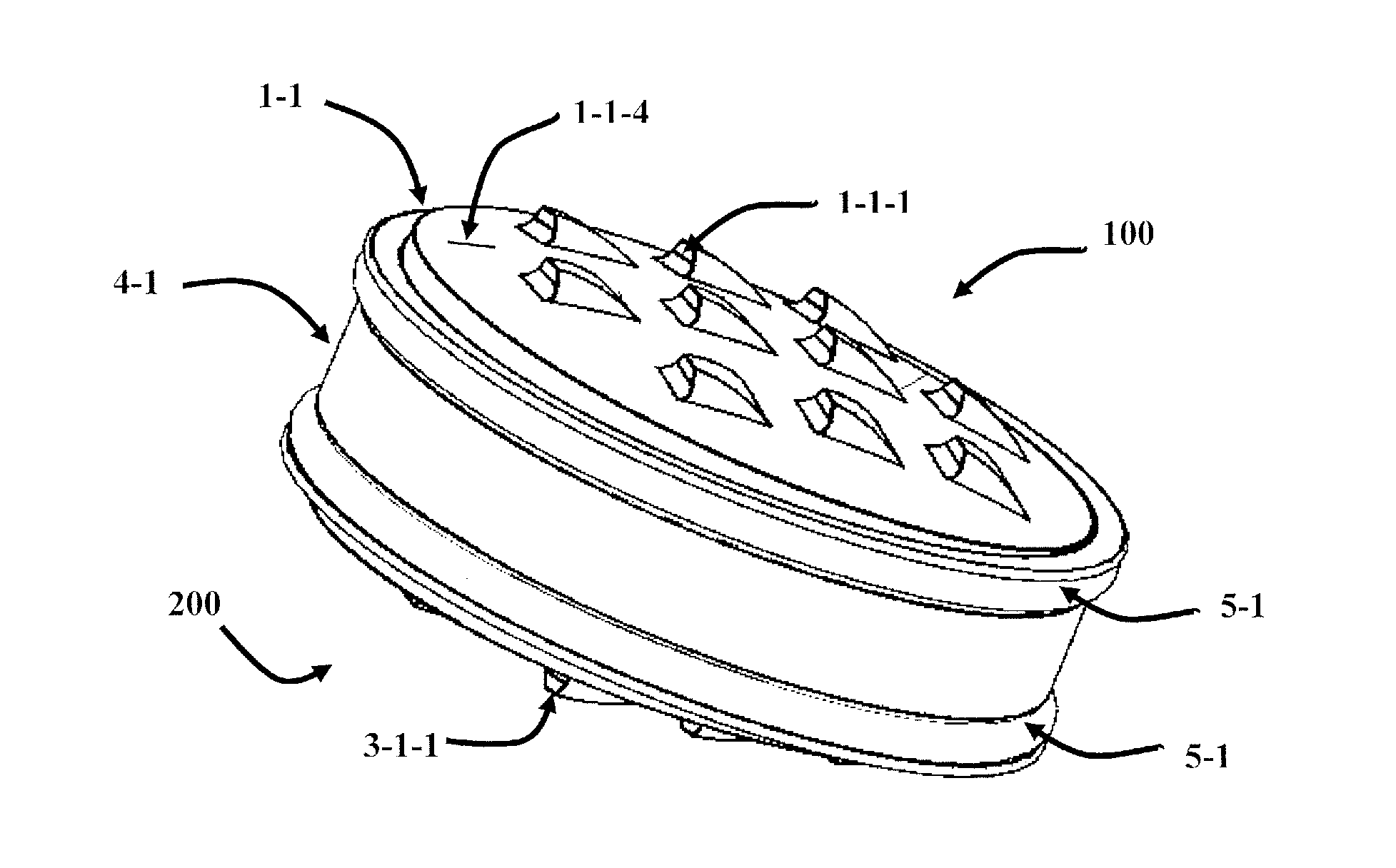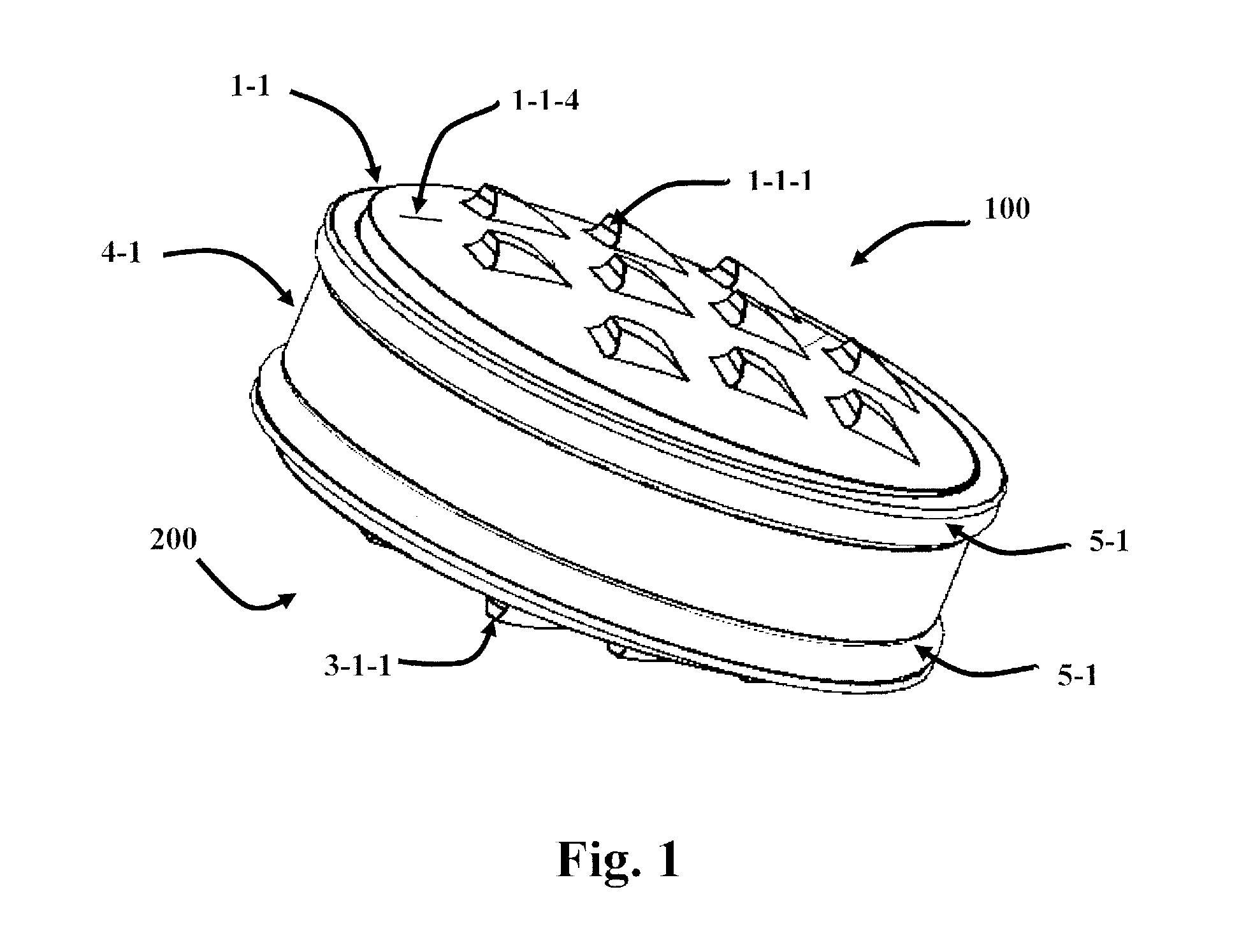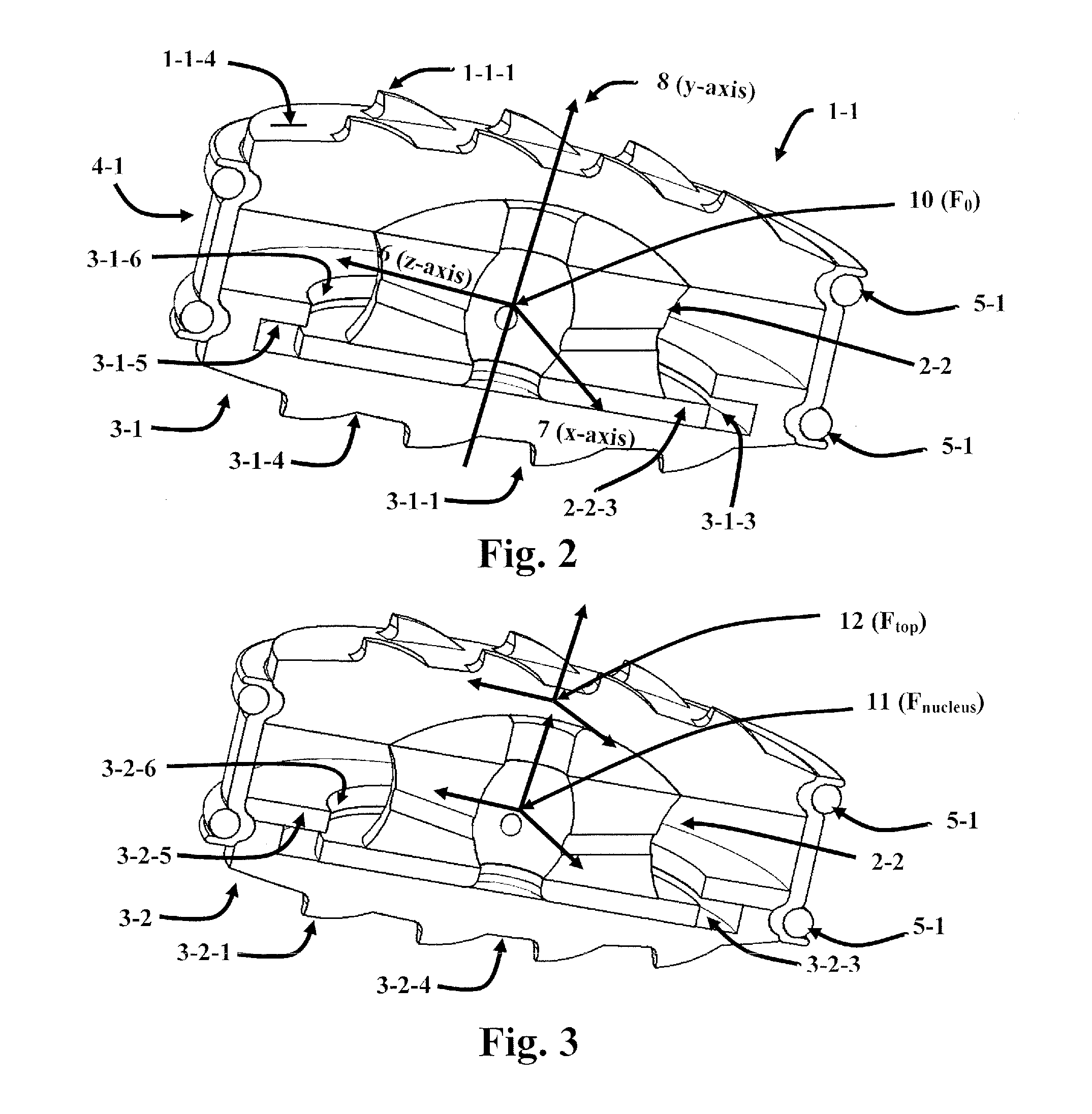Shock absorbing, total disc replacement prosthetic
a total disc replacement and shock absorption technology, applied in the field of shock absorption and total disc replacement prosthetics, can solve the problems of restricting spinal mobility, drastic treatments are usually unable to restore normal disc function, and devices that restrict motion in such a manner do not allow the natural motion of the vertebrae, and achieve the effect of convenient placemen
- Summary
- Abstract
- Description
- Claims
- Application Information
AI Technical Summary
Benefits of technology
Problems solved by technology
Method used
Image
Examples
Embodiment Construction
[0046]The subject invention pertains to embodiments of a device capable of providing motion with up to six independent degrees-of-freedom and redundant flexure degrees of freedom. Specifically, articulating mechanical joints of the invention can provide five independent degrees of freedom and one redundant axial rotation degree-of freedom. Flexure between the two mechanical joints provides an additional axial degree of freedom and allows a continuum of motions within the rated modulus of the material. In particular, flexure in the invention accommodates compression-extension motions along the axial axis of the FSU independent of the articulation joint degrees of freedom. Embodiments of the device can further simultaneously provide reaction to compressive, tension and torsion loads. More specifically, the subject invention pertains to embodiments of a device capable of approximating the potential motion between two vertebrae in a spine
[0047]The following description will disclose emb...
PUM
| Property | Measurement | Unit |
|---|---|---|
| degree of rotation | aaaaa | aaaaa |
| thickness | aaaaa | aaaaa |
| thickness | aaaaa | aaaaa |
Abstract
Description
Claims
Application Information
 Login to View More
Login to View More - R&D
- Intellectual Property
- Life Sciences
- Materials
- Tech Scout
- Unparalleled Data Quality
- Higher Quality Content
- 60% Fewer Hallucinations
Browse by: Latest US Patents, China's latest patents, Technical Efficacy Thesaurus, Application Domain, Technology Topic, Popular Technical Reports.
© 2025 PatSnap. All rights reserved.Legal|Privacy policy|Modern Slavery Act Transparency Statement|Sitemap|About US| Contact US: help@patsnap.com



